Saigon 75, it is Nuts! Publishing
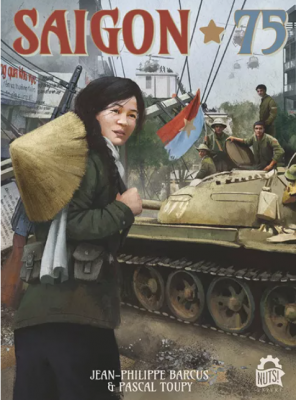 By Mitche Reed
By Mitche Reed
I hate to reveal my age, but I remember the US withdrawal from South Vietnam in 1975, I remember thinking as they pushed helicopters off the sides of US warships “Won’t they need those?”
Gaming the fall of the South is something that has always interested me; I have played Volko Ruhnke’s Fire in the Lake, Fall of Saigon expansion, but that is a COIN game and I wanted to play just the military aspect of the final act of the Vietnam Conflict. Luckily the designers from Nuts! Publishing has released Saigon 75 a game that covers the topic.
I hope many in our community have heard of Nuts! Publishing, a game company located in France has turned out some great games over the last few years. I first came aware of them with the game Somme 1918 which was a sequel to the HEXASIM game Marne 1918 Friedensturm, and of course, the amazing game Great War Commander which brings the Combat Commander series into the Great War (note: I have a type).
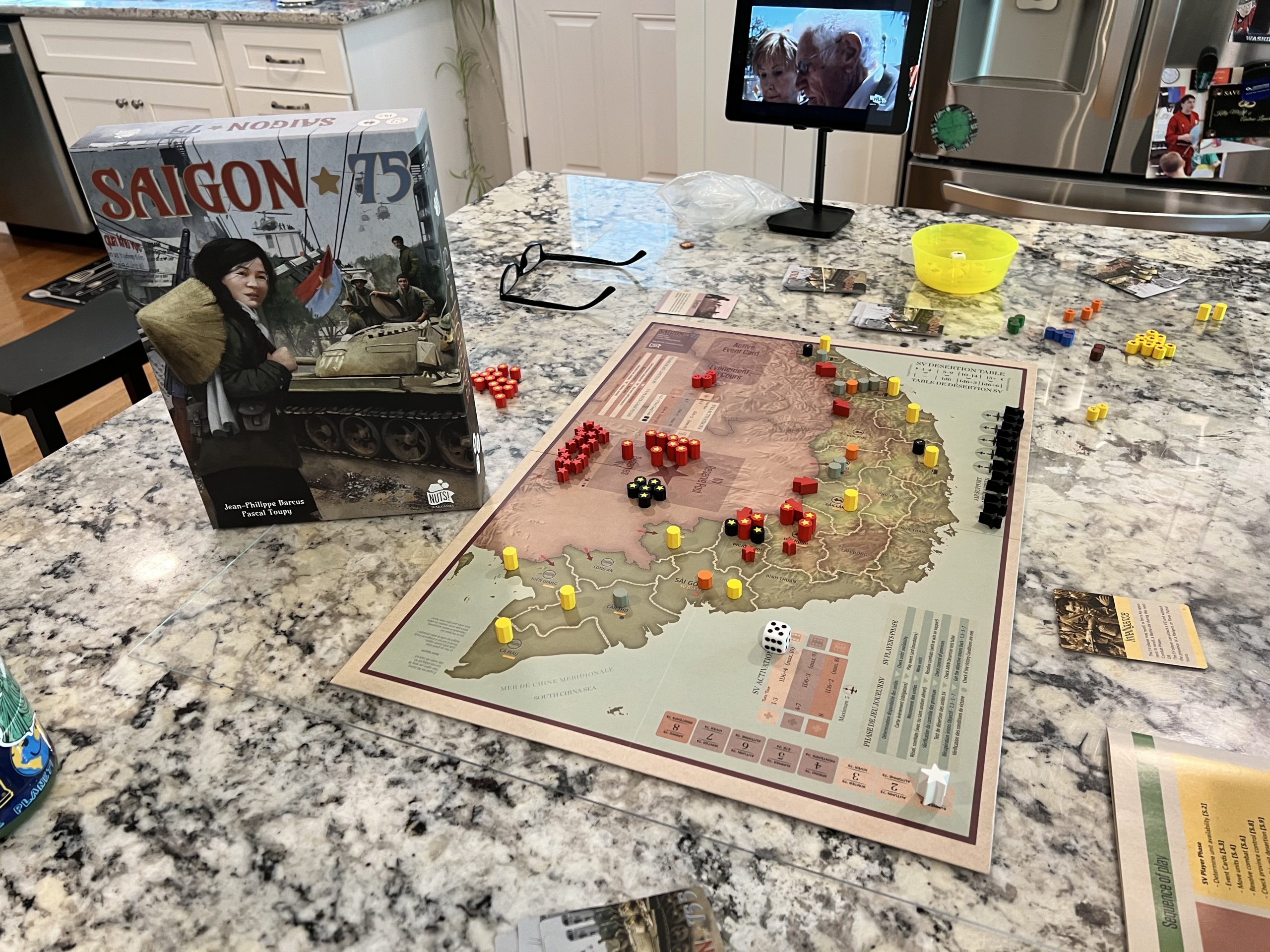
Pascal Toupy, who designed Great War Commander, was one-half of the design team for Saigon 75, with Jean-Phillippe Barcus, so I figured Saigon 75 would be a great game. While I did not back the Kickstarter for this item, it did have a delay in getting the game to print and then delivered which today is not something unheard of in the community.
 The game components are excellent, the playing pieces are made of wood and the map is a work of art. The game uses custom D6s, which plays into how the game looks at the asymmetric nature of the campaign, more on this later.
The game components are excellent, the playing pieces are made of wood and the map is a work of art. The game uses custom D6s, which plays into how the game looks at the asymmetric nature of the campaign, more on this later.

I quickly got the game to the table with NDNG’s own Doc Wohlrab and we forged ahead. For the first game, I played the North. While we felt our way around the game, we did have some questions as to how to interpret the rules. This was not because the game is not well designed. Instead, Doc and I play very complex games in both our personal and professional roles, and we tend to “read” that complexity into whatever rules we’re learning.
Designing games that can take very complex topics and distill them down to short and easy-to-follow rules is an art form as much as a science. Many game developers overcomplicate their games to make up for this skill and while many of these types of games are great, they can often overburden the gamer’s experience.
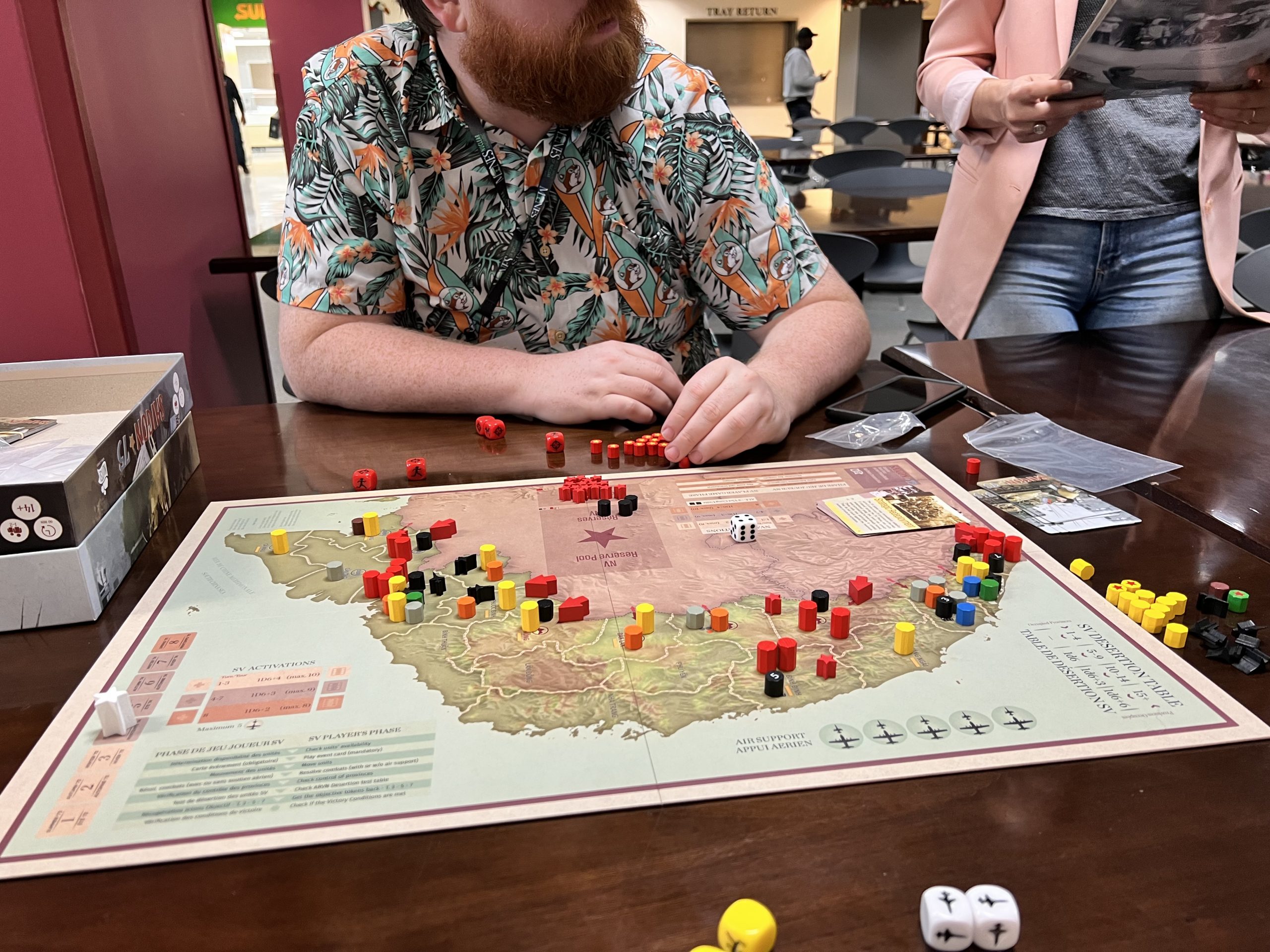
Saigon 75 does what it advertises and recreates the final chapter of the conflict very well. Any history buff will see how well the game places the players in the same decision space as the leaders of North and South Vietnam during the mid-1970s. The game takes what was an unbalanced fight and makes it playable.
The combat dice for the North and South are different. The North’s dice generate more “hits” and “retreat” results. Not only do the dice work against the South, but during certain points in the game they have to roll to see how many units in their army desert and flee the fight. The asymmetry is somewhat made up for by the event cards which skew towards the South. Each turn a player has to play a card from their hand before they take any actions and some of them can really affect gameplay.
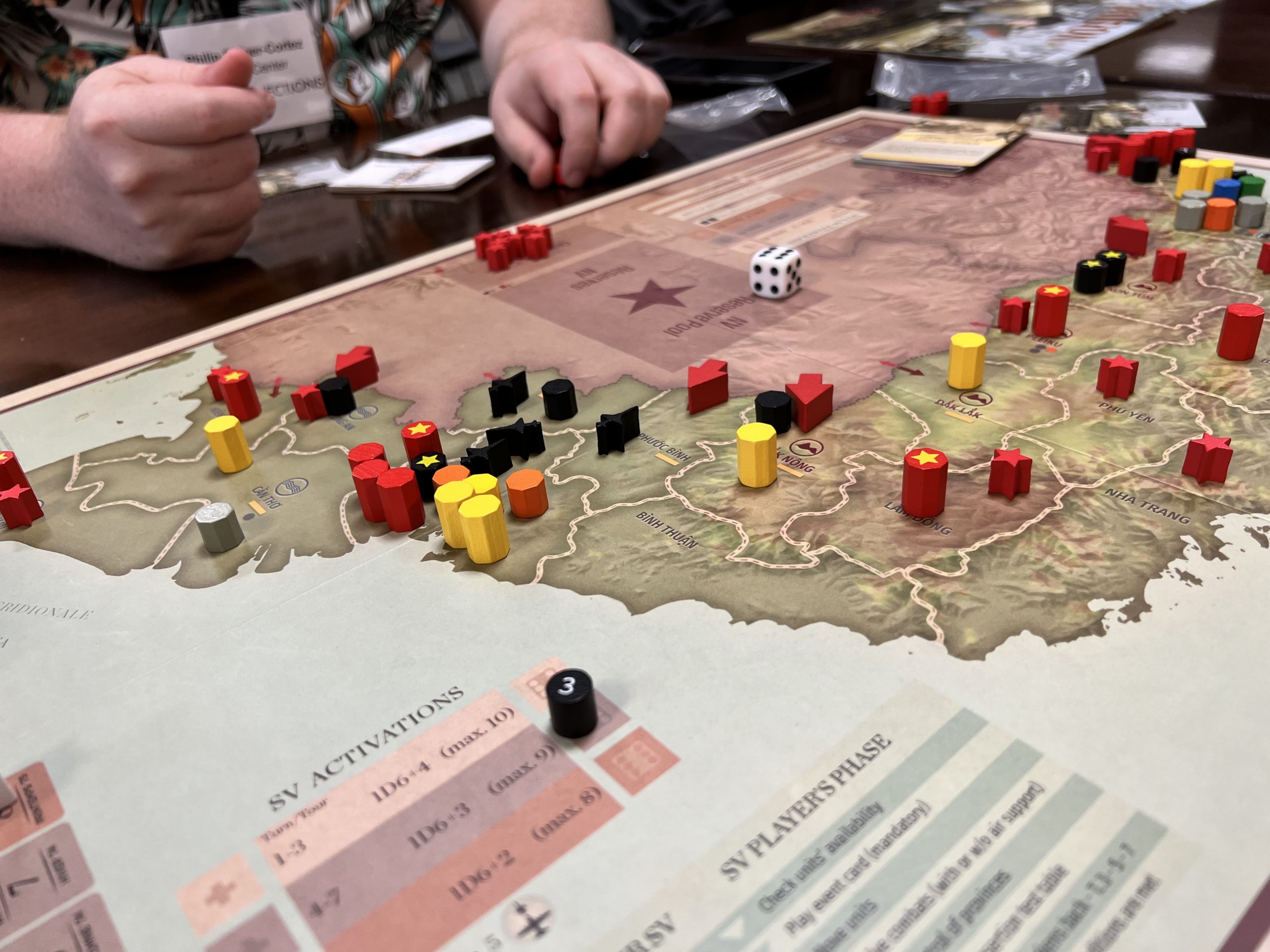
The victory conditions are simple, capture Saigon before the end of the game, however, getting there is the trick. The game uses a slick mechanic by placing some Objective Tokens in the North, which are crucial to capture before they disappear so that the North just does not focus everything on going straight for Saigon from turn one onwards.
 When Doc and I first played the game, we wished some key mechanics were better spelled out, such as how the South can use air assets, and how to interpret some of the event cards. Despite this, we liked the game. It plays so quickly, we did as the rules recommend, changing sides to see who could win the game faster as the North.
When Doc and I first played the game, we wished some key mechanics were better spelled out, such as how the South can use air assets, and how to interpret some of the event cards. Despite this, we liked the game. It plays so quickly, we did as the rules recommend, changing sides to see who could win the game faster as the North.
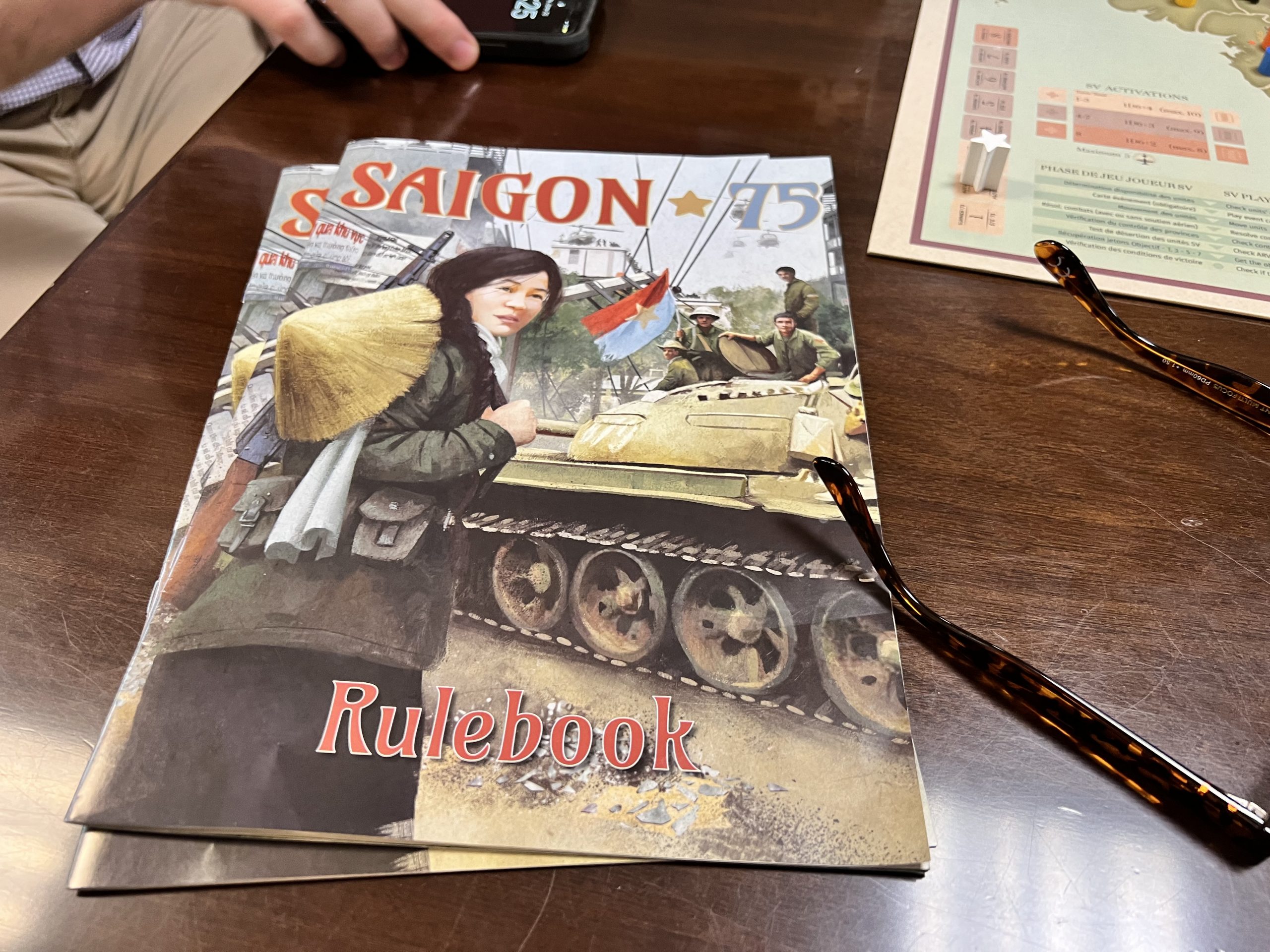
My second time playing the game was with Kevin Bertram from Fort Circle Games, who backed the game during its Kickstarter campaign and had yet to play it. He also liked the game but also felt that some of the rules just need a quick reference sheet to aid in learning the game.
As Kevin and I often do, we broke apart the mechanics of the game to see how they could run smoother. However, in retrospect, a well-done reference sheet would solve the issues we had. The game really works well, however changing any of the mechanics would probably upset its delicate balancing act of playing such an asymmetric fight.
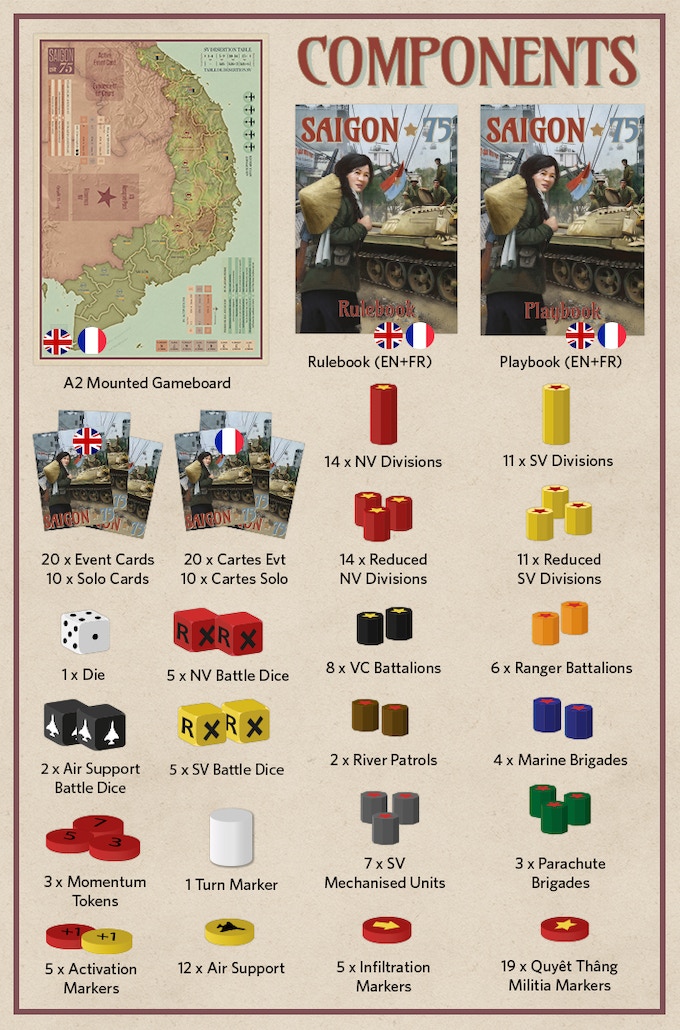
None of these comments should dissuade anyone from getting this game; it is very good. I am sure the design team had some long nights getting the balance of the game right. That is not easy to do while still making the game easy and fun to play while staying true to the historical context. I will ask the number one forum question right now, yes the game has rules to play it solo.
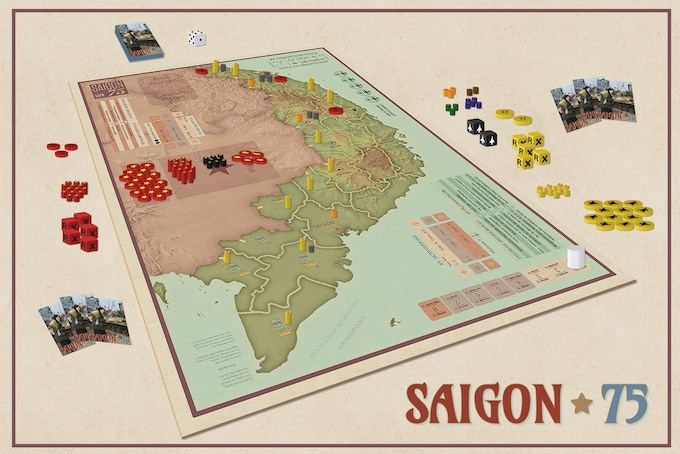
The rulebook states upfront that Saigon 75 is the first in the Under Pressure (UP!) series that will have titles based on under-gamed and symmetric fights (probably why they are under-games). If Saigon 75 is the first attempt at this ideology, I feel that the future games in this series will also be great games that I am already looking forward to playing.
